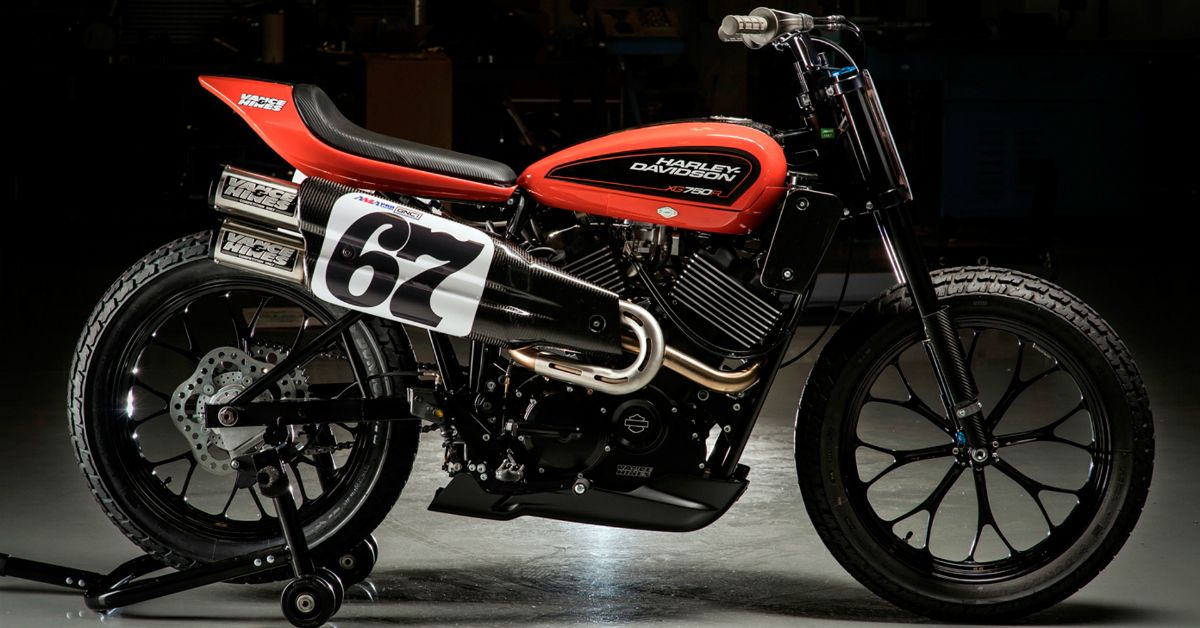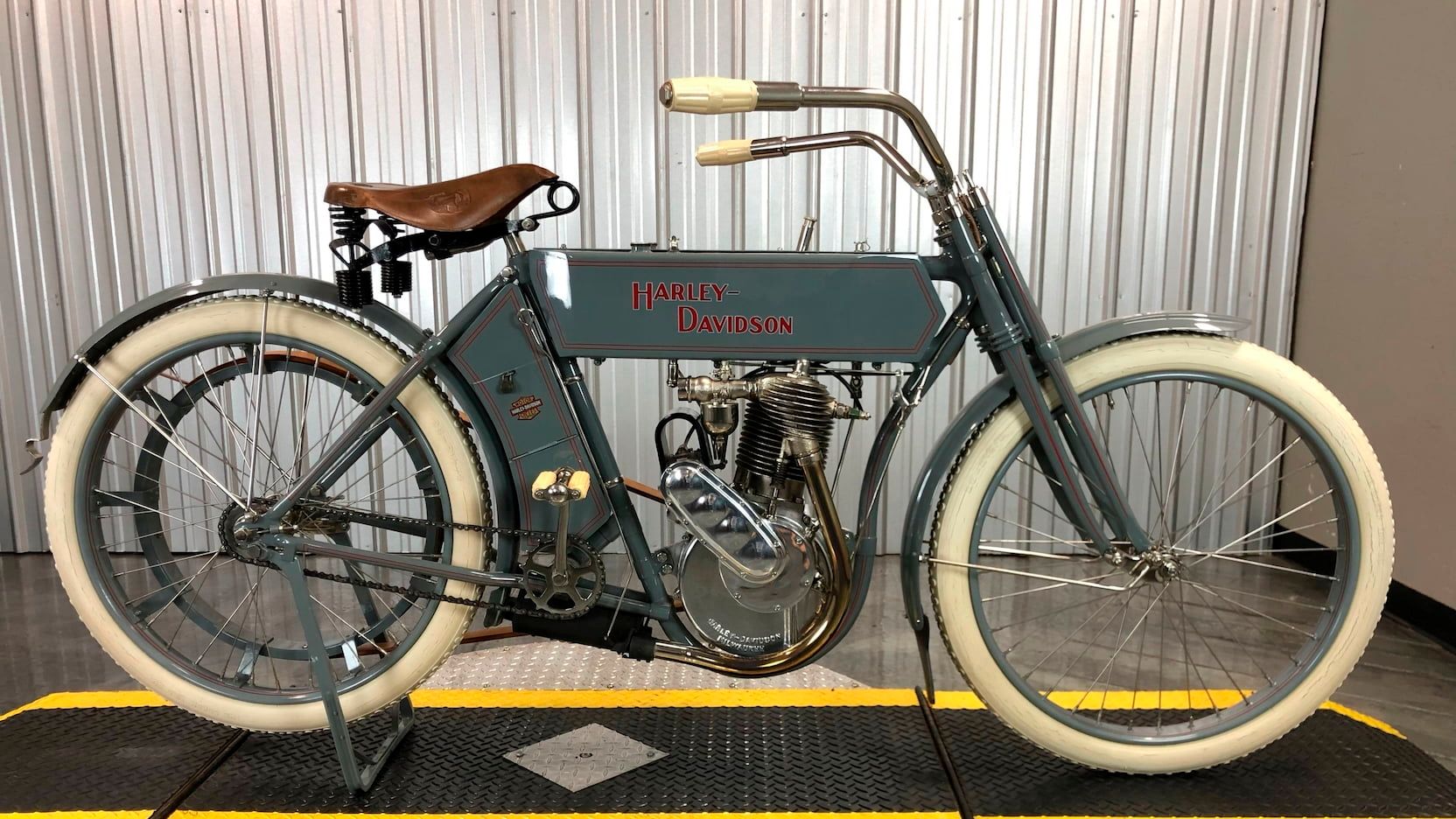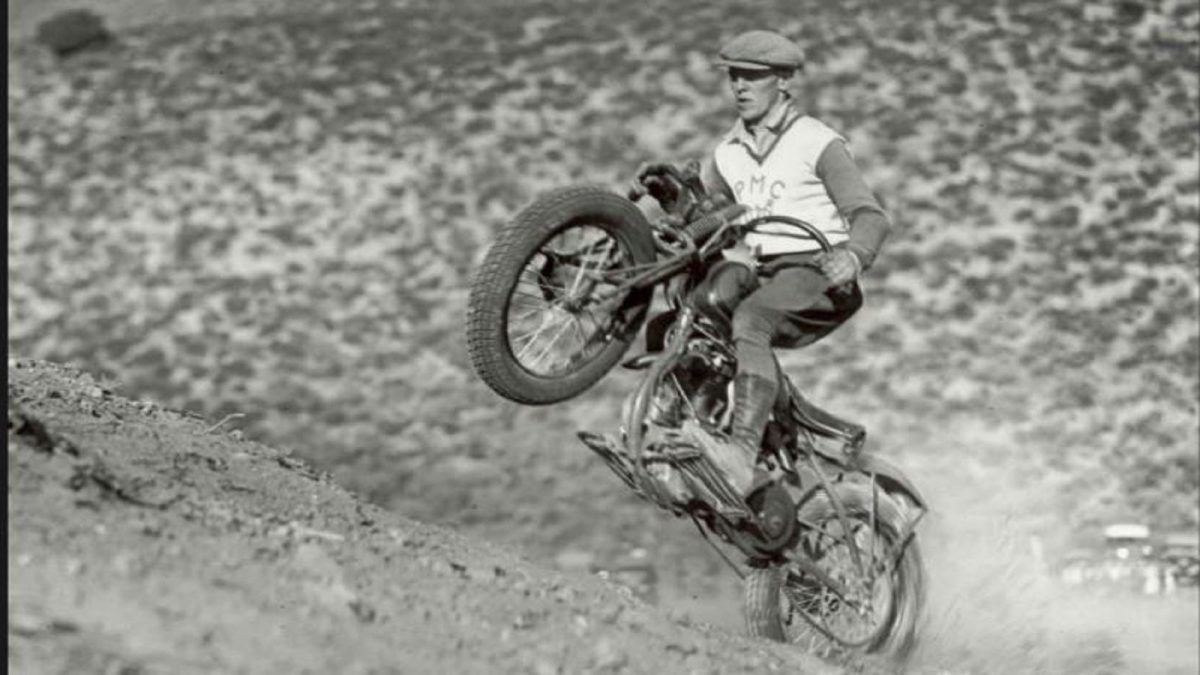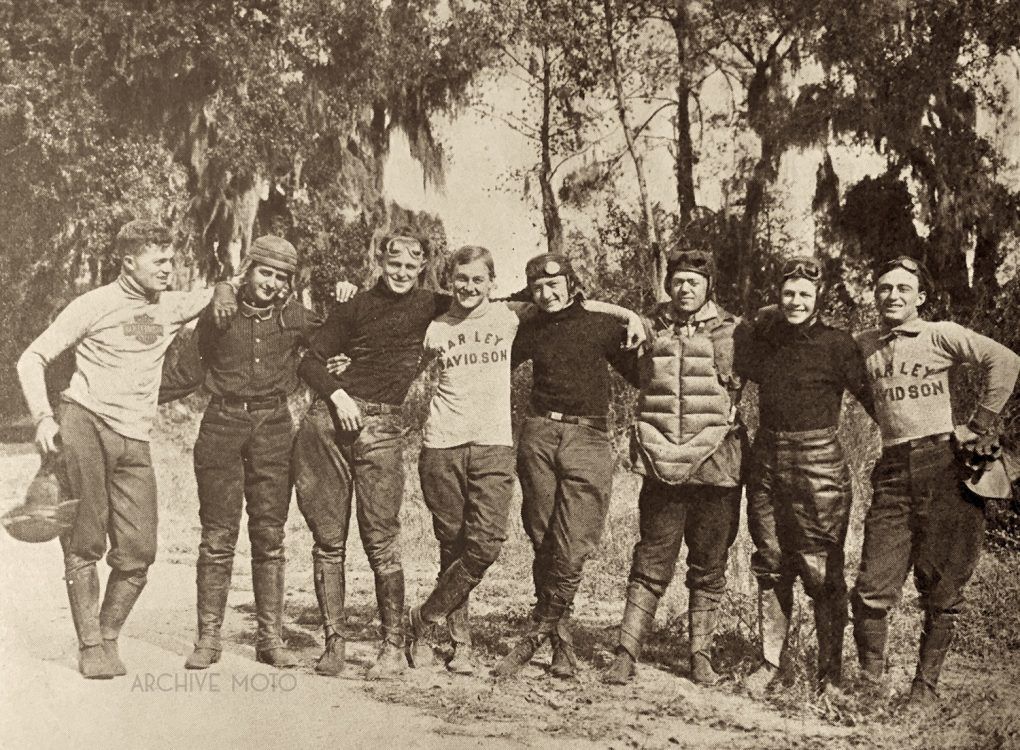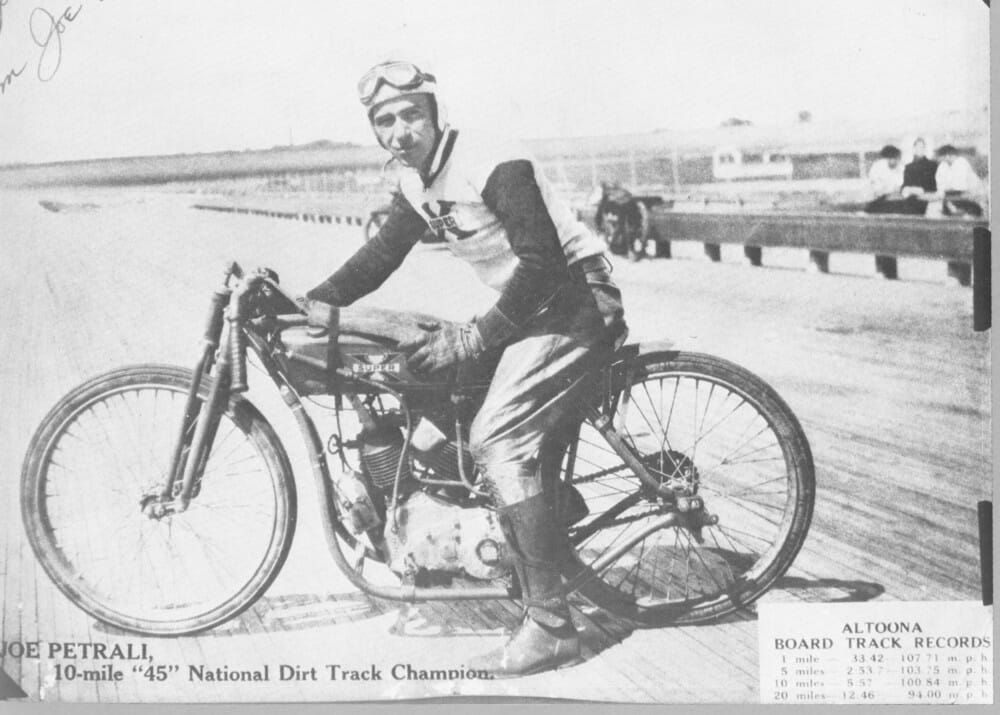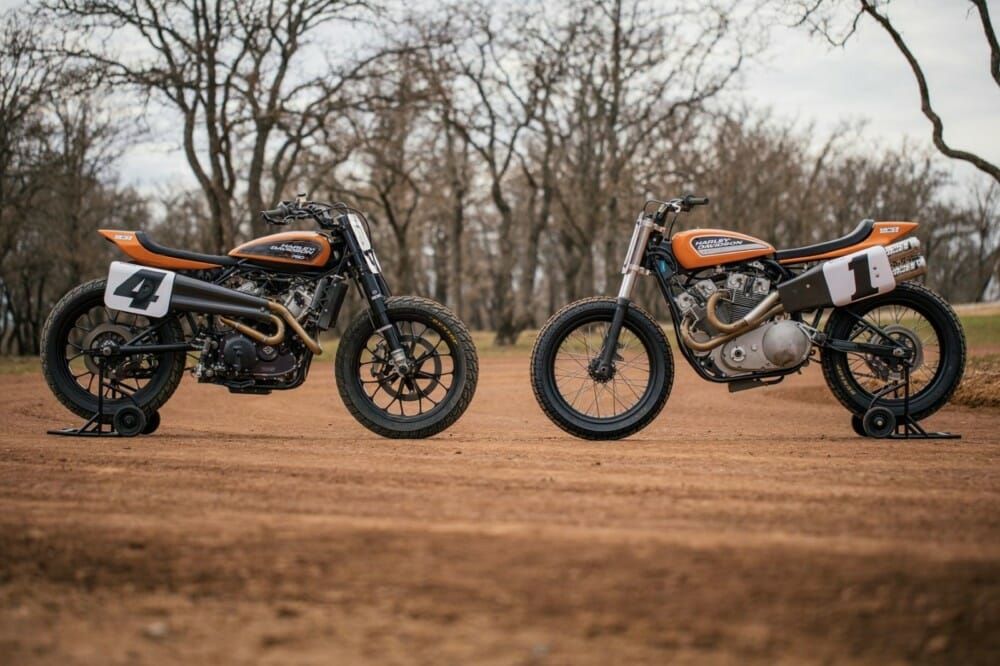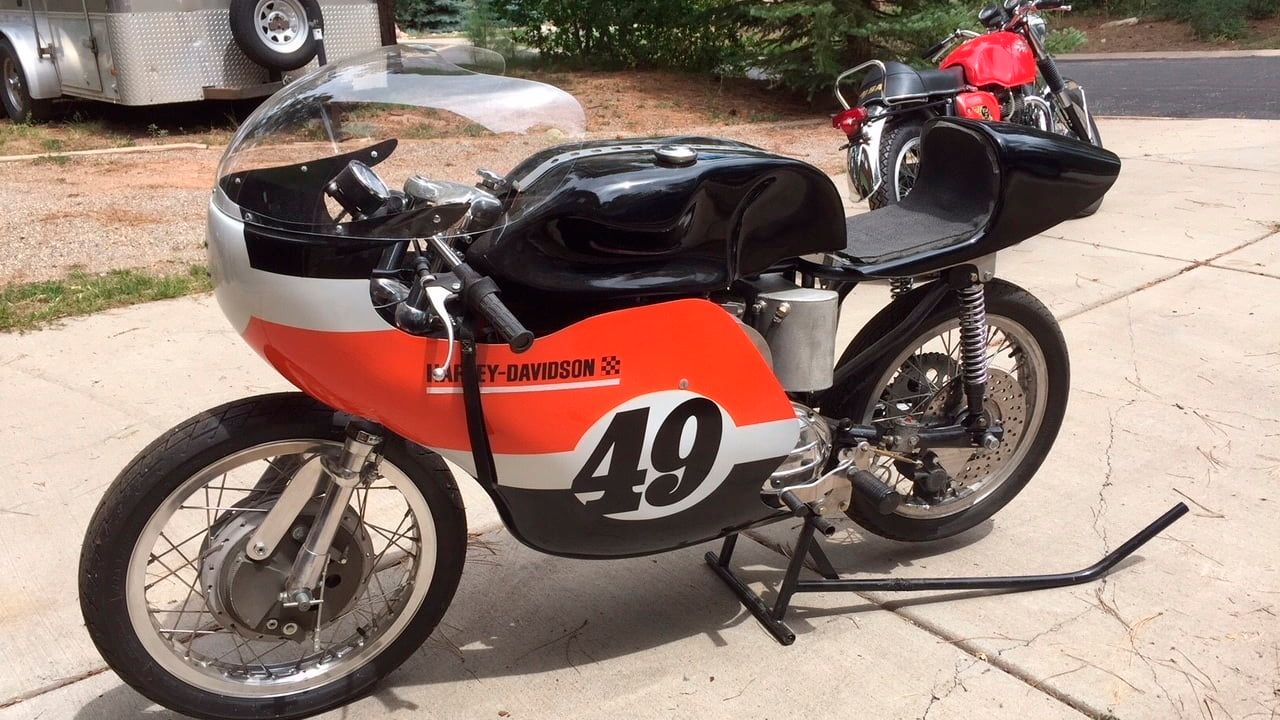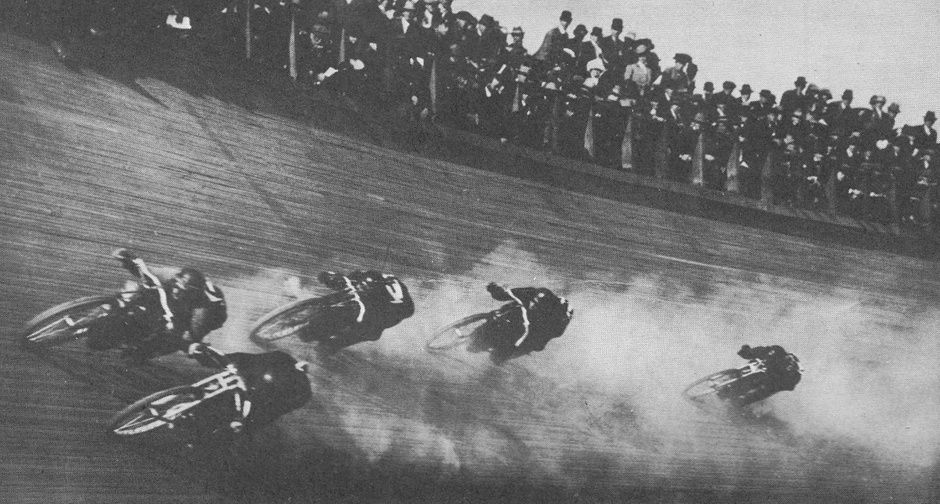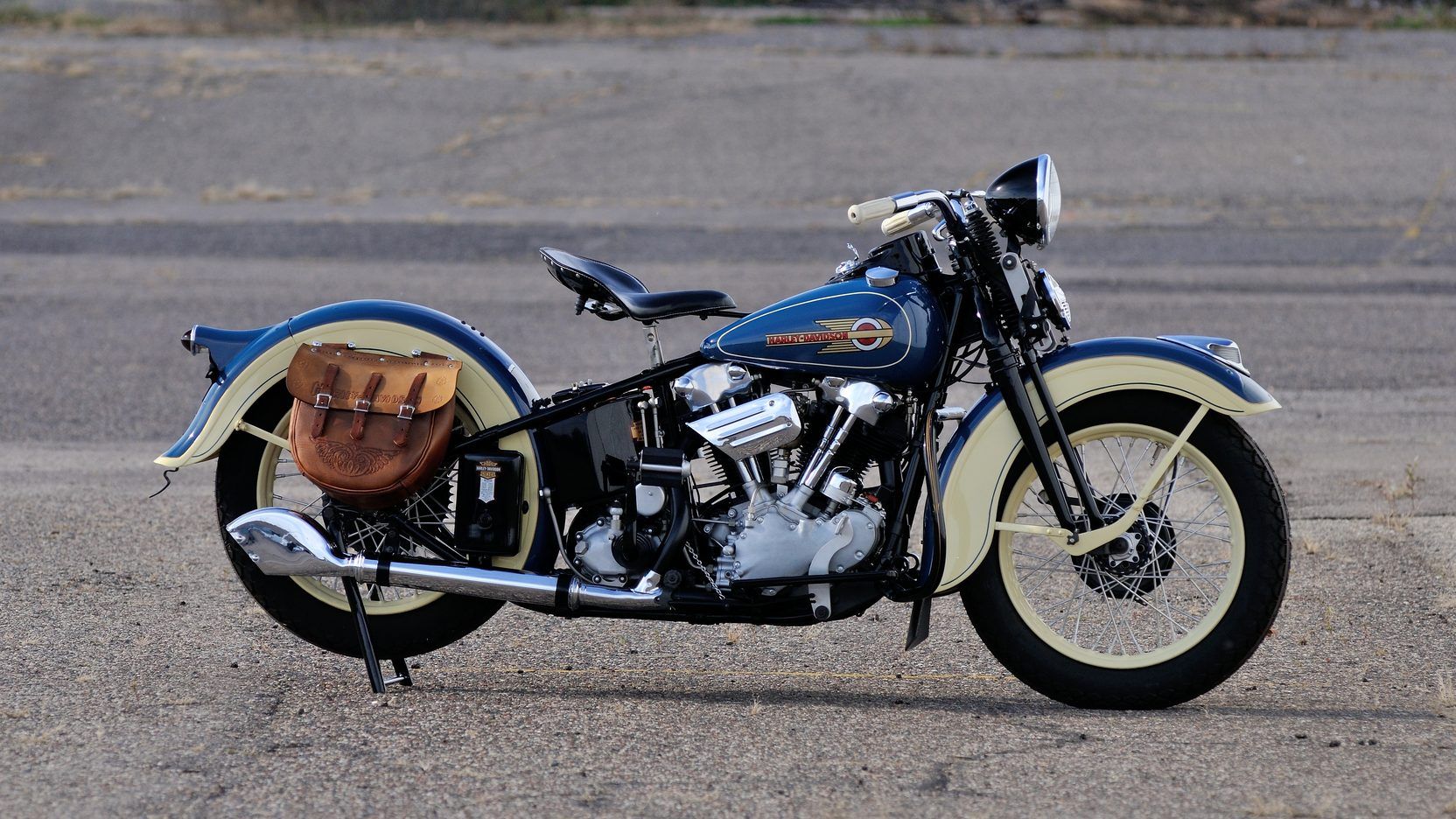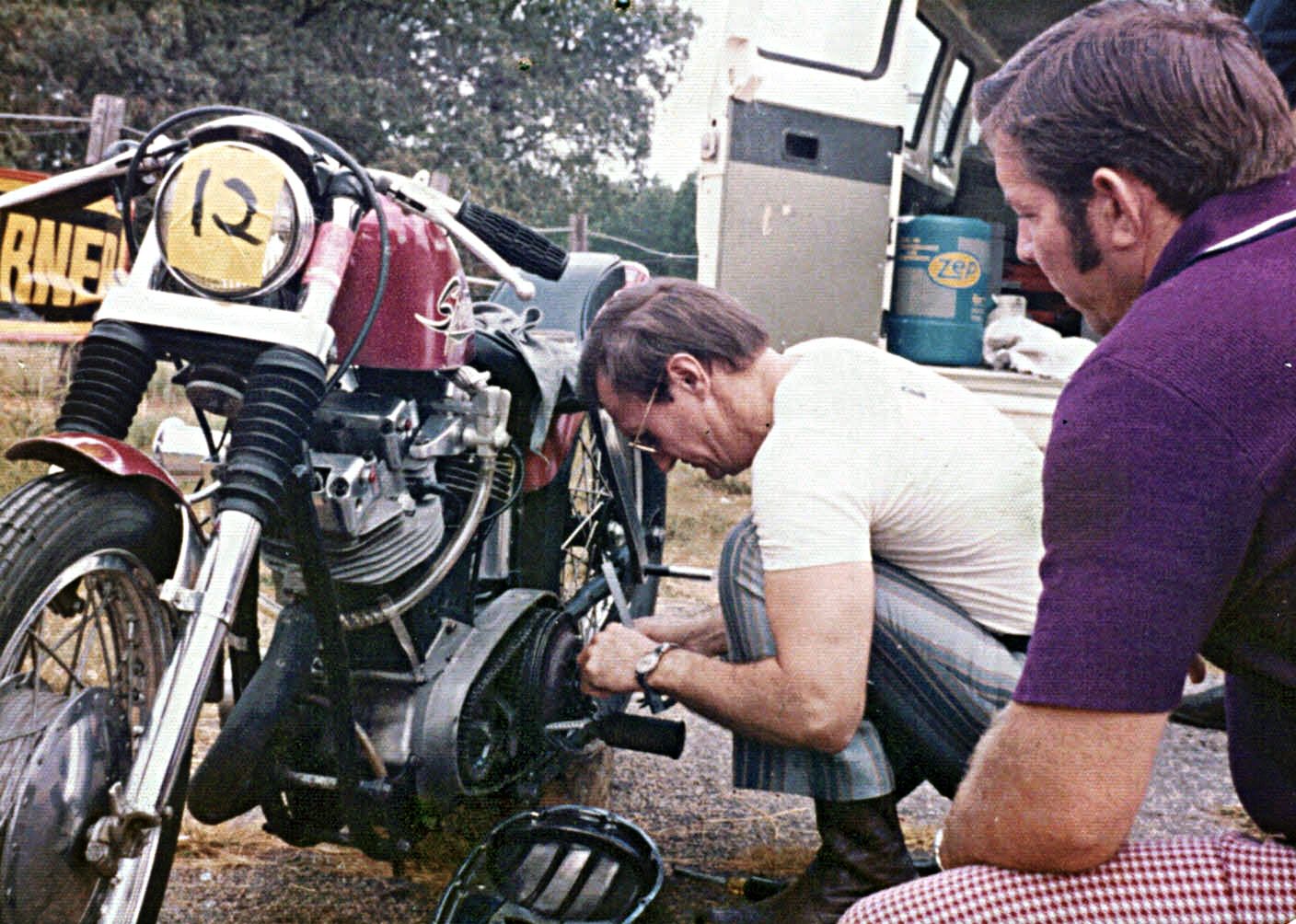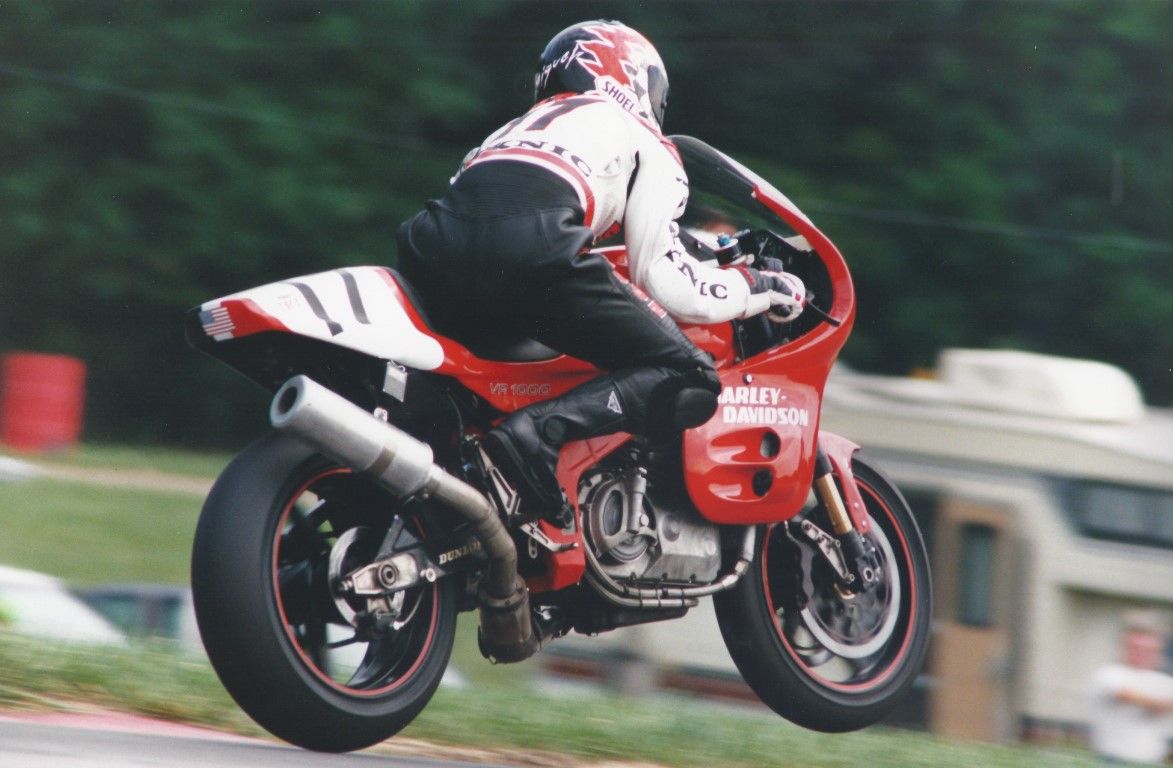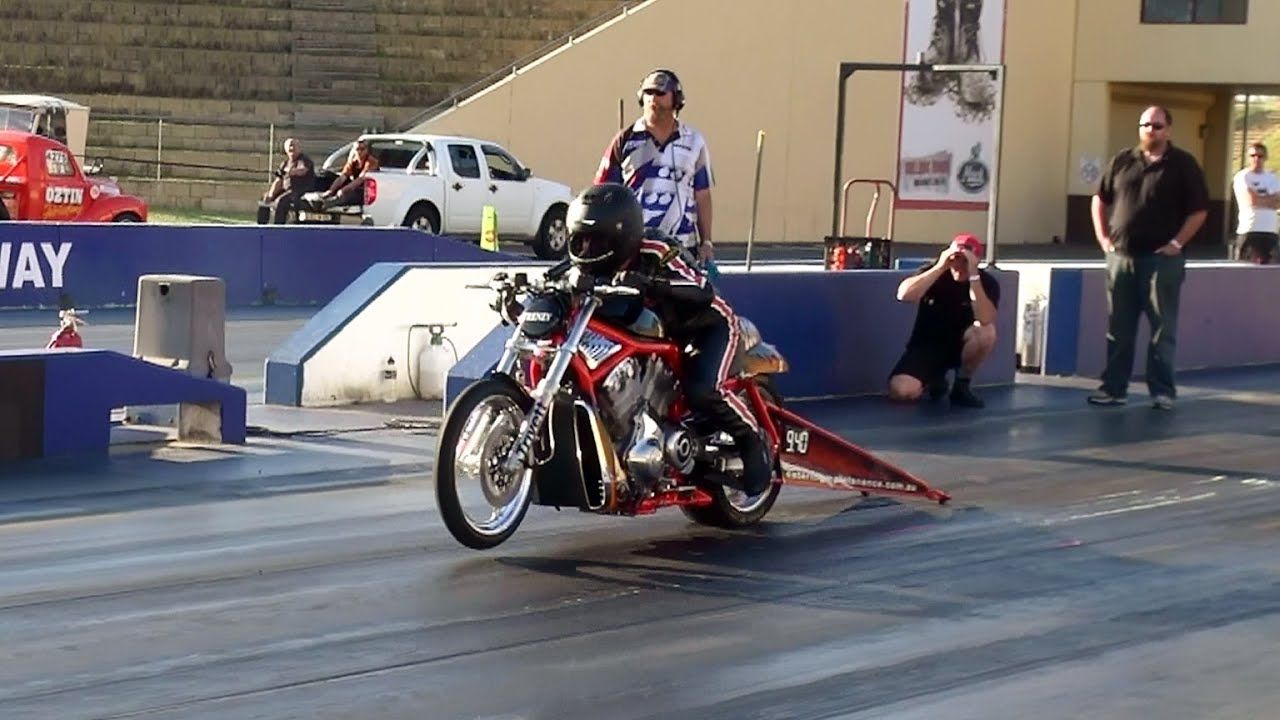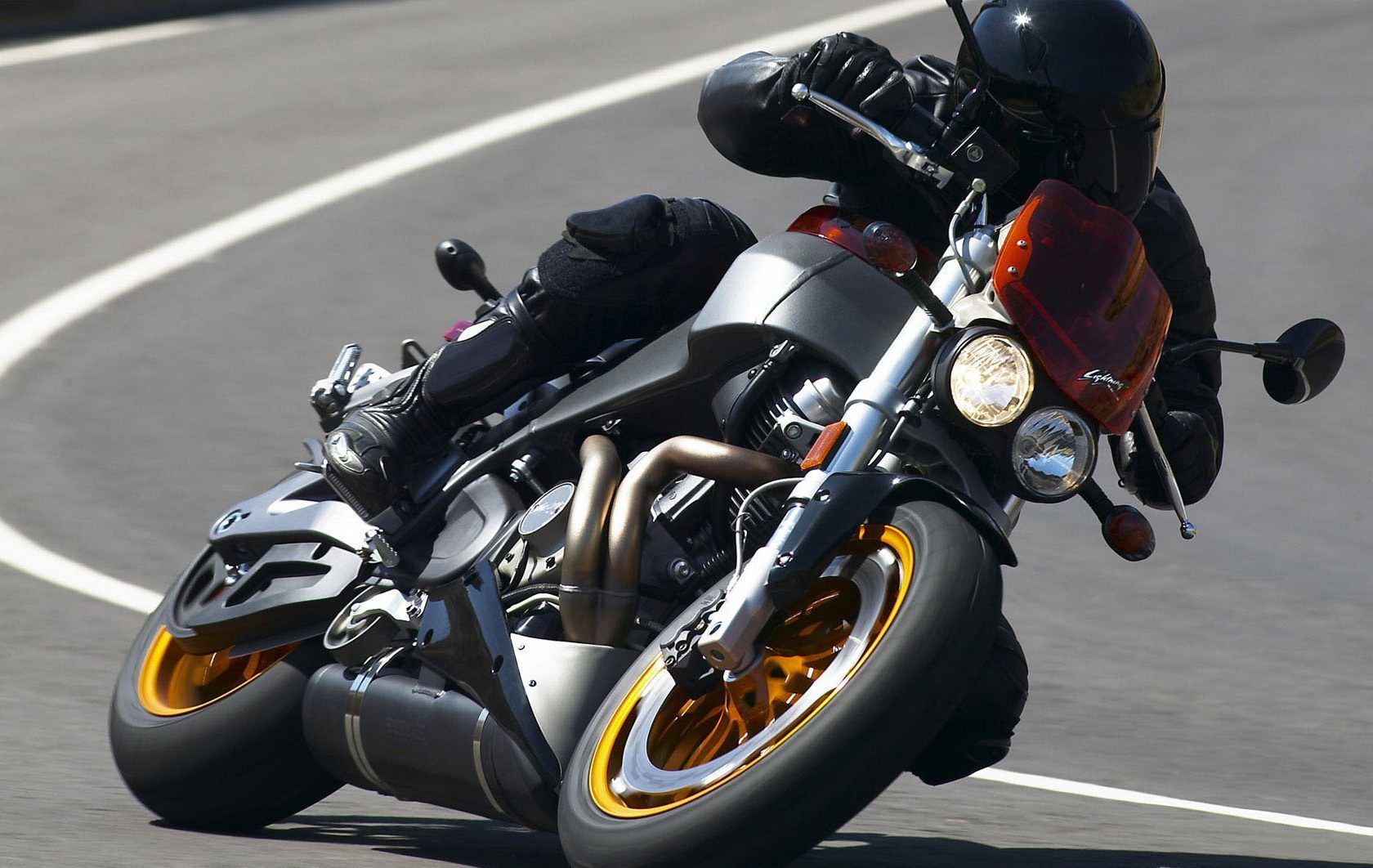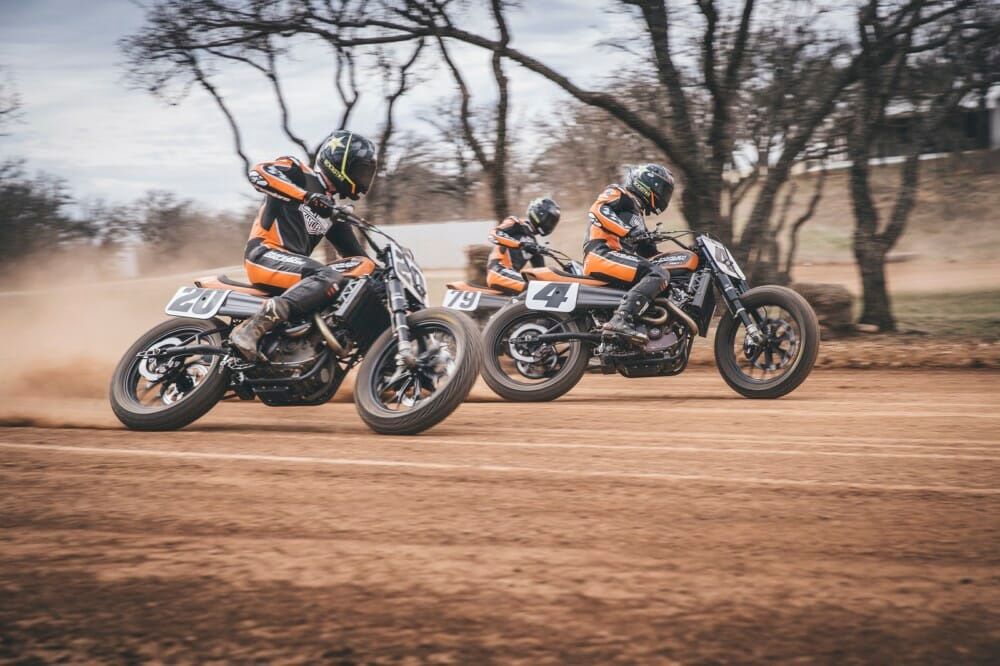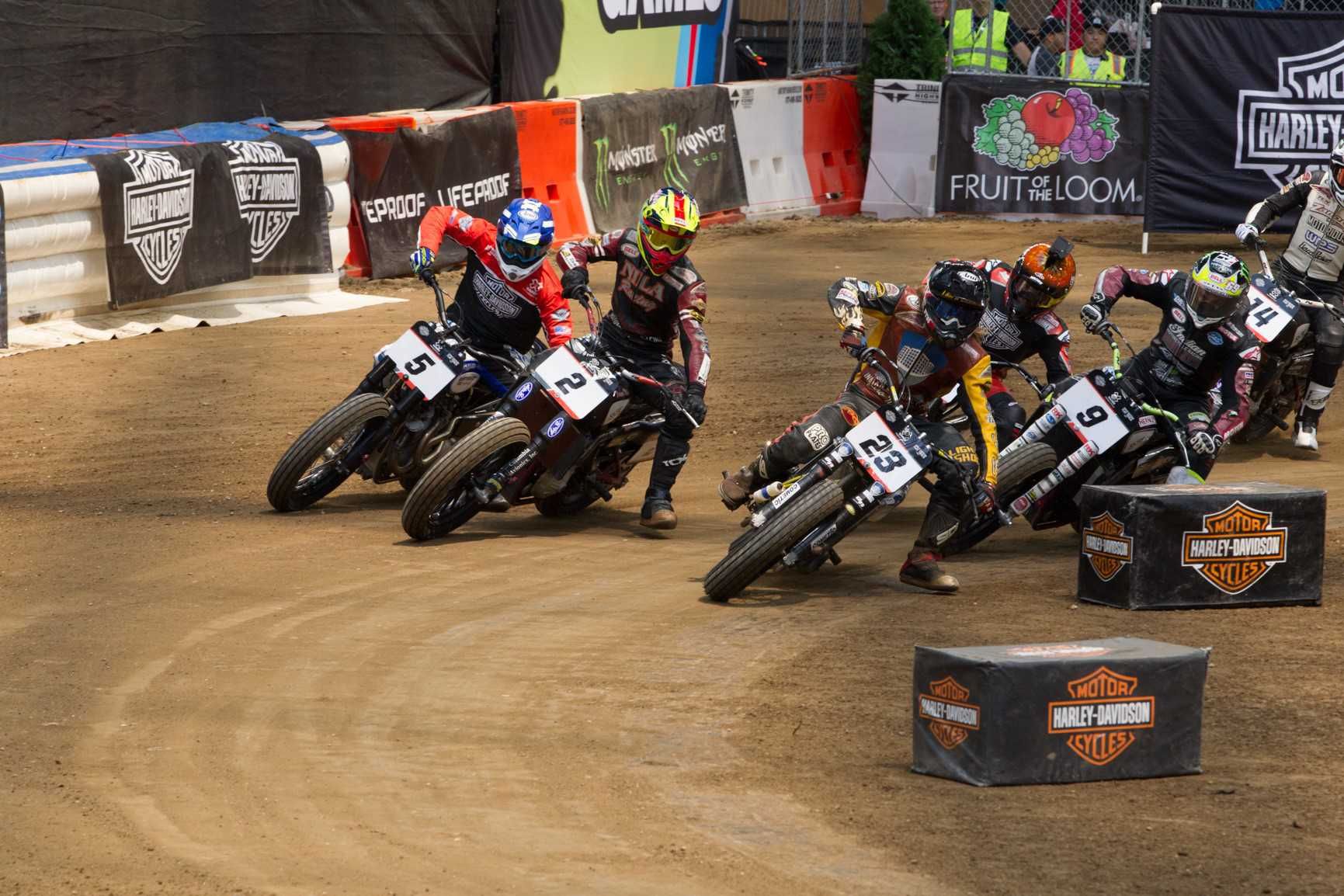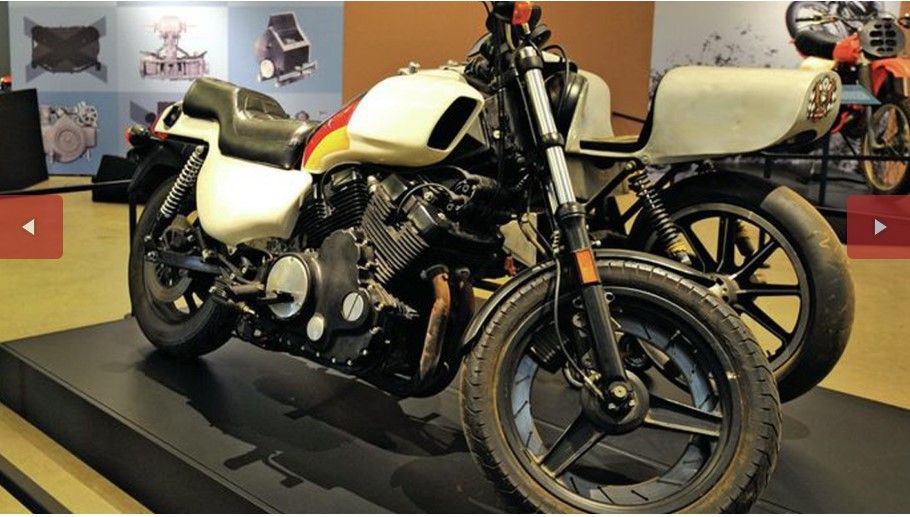Harley Davidson, when it was still a privately held company, got involved early on with competition as a way to promote the performance of its products, as well as prove its reliability.
It was successful in its endeavors for years and won many trophies, sometimes dominating the leagues and classes it competed in against competitors such as Indian and Excelsior-Henderson. The British bikes with their smaller engines couldn’t topple H-D very much either, and the Italian bikes were small-displacement bikes that couldn’t compete with the bigger Harley engines.
Harley even owned and sold Aermacchi’s series of sporty 250cc and 350cc to stay competitive in the youth market. Things changed, and H-D became reluctant to sponsor motorsports when the Japanese, German and Italian marques started importing serious bikes into the USA starting in the 1970s.
15 Winning Before The V-Twin Was A Thing
According to H-D’s own website, as early as 1908 Walter G. Davidson was competing with what must have been a single cylinder in an event where he scored a perfect 1,000 points. It was ‘The Endurance and Reliability Test", which was run by the “Federation of American Motorcyclists, which still exists today.
The website says the first v-twin powered model which became the bulwark of the brand, came a year later with the "Silent Little Gray Fellows" series of engines. Those bikes effectively doubled power by adding the second cylinder.
14 Hillclimbing Became Their First Speed Sport
Way back in 1908, H-D was out powering its competition in speed sports, with Hillclimbing being the first sanctioned sport. It dominated the sport to the point that it was taking all the trophies by 1910 - where it took 7 events in a row with first-place finishes.
Hillclimbing has been a big Harley event ever since then. The modified wheels and tires have spun off similar competition such as sand-drags and competition pulling events. The company built motorcycles with a lot of low RPM torque, which makes powering out of areas with wheel stoppages easier.
13 H-D Formed Its First Factory Competition Team, Known As “The Wrecking Crew” In 1913
According to MotorcyclistOnline.com; The original Wrecking Crew was the official Harley-Davidson factory team that dominated motorcycle racing on dirt and board tracks in the early 1920s with talented racers that included Red Parkhurst, Otto Walker, Fred Ludlow and later Joe Petrali.
In 1968, Harley-Davidson Class C dirt track and road racing teams won 18 National Championships out of a possible 23 and the Wrecking Crew nickname was revived. In 2006, the official Harley-Davidson Wrecking Crew was reformed to include the Factory Team and select riders racing for independent teams that receive support from Harley-Davidson.”
12 Factory Racing Wins From The 1913-Post WWII ERA
In 1922, H-D won all 8 National Championship races sponsored in the USA for Motorcycling. After building a series of 45” and 74” engines in the early '20s, it broke 30 land-speed records at Daytona Beach between 1920-1925.
1932-36 rider Joe Petrali ran a streak of AMA Grand National Championship wins. Bill Davidson Jr. won the 1934 Jackpine Endurance Test with 997/1000 points! In 1936, Joe Petrali recorded a land speed record of 136.183 m.ph. 1947-49 Jimmy Chann wins 3 consecutive AMA Grand National Dirt Track Events. 1954-61 H-D swept the AMA Grand National Series with 8 consecutive wins.
11 XR750
This was the most successful racing Harley in history having won 29 of 37 AMA Grand National Flat Track Championships from 1972 onto 2008. The bike went for sale starting in 1970 and didn’t change much through the years. Basically, it was a destroked Iron-Head Sportster with two front cylinder heads and a hotter cam running two carburetors, not one.
In 1972, there were some improvements made to the engine, such as aluminum heads. The bike used to its advantage rules that permitted a 750CC engine which was 250CC larger than the 500CC limit if the engine did not have OHC configuration.
10 KRTT750
In 1961 Harley built a fully-faired road-racing version of its dirt-track competition model and called it the KRTT750. Speeds were recorded as high as 163 mph in top speed events. In 1963, Ralph White won the Daytona 200 Road Race on a KRTT750. From 1955-69, 12 of the 15 AMA Daytona 200s were won on the KR750 (dirt track) or the improved KRTT750 (road course).
H-D competed and won several Class “A” and Class “C” streamliner competitions on the salt flats and dry lakes using 250CC and 750CC configurations. In 1969, George Roeder averaged 177 mph using a 250CC engine.
9 Board Track Racing; The Sport Nobody Wants To Talk about
According to Wikipedia and Jalopnik, these races were very popular from the 1910s until the beginning of the 1930s. Some tracks staggered on until the 1940s, but the 1912 Newark New Jersey race that killed 4 spectators, 1 rider and injured 10 more spectators put people on alert that this was a dangerous sport.
According to various sources, this was the era of the Harley F-Head and its competition which used total-loss oiling systems, single-speed transmission and no brakes on ¼ and ⅓ mile banked oval tracks. Because the boards were smoother than dirt, you had top speeds above 100 mph on bicycle tires and no brakes, or a tiny rear drum brake at best.
H-D dominated this era because its engine was larger and had better breathing than the other two competing companies.
8 The First High Output Engine For The Street
According to Ultimate Motorcycling; 1936 was the introduction of the OHV Knucklehead 61” engine, which meant an honest 30+ h.p. Back in the 1930s, on a vehicle that weighed well under 500 lbs, that meant serious power could be had for competition.
In the same year, an 80” version of the same was used to set a speed record for Sidecar Transcontinental Racing by riders Bill Connelly and Fred Duria, they broke it before the finish but were far ahead of the competition. It also won Several F.I.M. ISDT enduro events lasting 6 days offroad in Europe during the '30s.
Over in Wisconsin, Steve Kakuk of Manitowoc rode his 61 c.i. Harley to victory in the Wisconsin TT championship near Madison. Kakuk and his brothers, Joe and Louie, reported to have cleaned up in all of the Class C races at that event - all on Harleys.
7 Post-AMF-1980s
According to H-D’s website; while the last part of the ‘70s was dominated by consecutive wins by Jay Springsteen on AMA GrandNational, the 1980s continued the wins with several racers through the decade.
Starting in 1981, Scott Parker won 83 races in that decade! Ricky Graham and Randy Goss won several other championships. Non-factory, modified drag-racing classes run by organizations such as “All Harley Drag Racing Association” used highly modified Sportster, Evolution, Shovelhead, and even occasionally antique engines running on multiple fuels.
What is interesting is that highly modified large stroke “Harley-Based” engines can make decent power on Nitro-Methane because of the slow flame travel characteristics of the fuel despite less ability to attain high RPM! While never as fast as 4 cylinder Japanese based engines, these drag racing events have grown in popularity year after year.
6 The VR1000 Experiment
Certified for limited production in road racing and laughingly homologated as a road-legal bike in Poland starting in 1994, H-D hired Miguel DuHamel as its lead rider and made serious efforts at AMA road racing. The bike, despite being a modern design, was still a little low on top-end horsepower for the era due to its peak power production being just above 10,000 RPM.
The bike placed mostly mid-pack, but DuHamel’s riding style complimented the broad torque curve of the bike, which used only 5 speeds - something that was unusual on a road racing bike. The bike was a learning curve and H-D used its engine development in making the Vrod series of street bikes, both engine series were made by Porsche. Unlike everything else ever made by the Motor Company, the bike used a very modern twin-spar aluminum frame, inverted forks, and inboard-mounted rear shock along with opposed piston brakes.
5 The VRSXC Destroyer, Factory Drag Bike
Never intended for the street, this bike came with a solid rear suspension and drag bars along with a compression ratio, fuel injection mapping and camshaft design configuration strictly for quarter-mile drag racing.
The bike had special heads and a 14:1 compression ratio producing an honest 165 h.p., which was over triple the h.p. every other bike H-D sold at the time. The bike was sold via special order between 2004 and 2006. It was capable of producing solid low 9 second quarter miles. It had a true lock-up drag racing clutch and was designed to be a turn-key racer.
It was sold to any racer who could wait out the return period after paying the 60k price in advance, and you did not have to be sponsored by H-D. This was one of the bikes killed by the new CEO hired in 2006 from an air-conditioning and refrigeration company, whose damage to the positioning of H-D is still felt to this day.
4 The Buell Debacle
This was and should have remained a serious H-D development asset. Former H-D suspension/chassis engineer Erik Buell began building XR750 and Sportster powered sportbikes since the early 1980s. He would buy surplus lots of powertrains and build his own suspensions and components around them.
By 1996 Harley had part ownership of the company and using the new capital Buell started developing some very good sports models through the ‘90s and early 2000s, constantly moving technical specifications upward. After redeveloping the Sportster engine to double the output and increase longevity significantly, Buell then developed a modern liquid-cooled competition series of motorcycles that produced metrics anyone would be proud of.
While those models do continue today as “Erik Buell Racing” 1190 RS and S series, H-D straight up screwed their subdivision 2 years after their highest sales cycle, and in 2006, they forced bankruptcy despite the division always running in the black. H-D ate the cost rather than allowing its investment to be sold to another entity.
3 Post Millennial Racing Development
Having re-engaged its traditional cruiser, road-couch, and custom crowd, Harley made incremental improvements on its traditional line of air-cooled slow bikes. While they are no longer slow due to doubling displacement in the last 100 years including engines up to 121” and 4 valve cylinder heads, these bikes are not suited to competition beyond occasional quarter-mile racing.
H-D instead took its 500 and 750 “Street” series of XG motorcycles and developed a series of AMA GrandNational Bikes called the XG750R. These bikes have some limited success because they are in a class by themselves. Oddly enough, the motors are small-displacement versions of the canceled VRSC series of cycle engines developed by Porsche. At 56 h.p.for the tuned version they are sure to win in a handicapped class or at something called a regatta (sic) against any other brand!
2 X-Games
Again, Harley plays the safe card by going after competition classes that it develops for its own riders rather than risk competing in previously developed motorsports. First, it lobbied the 2014 X-Games to allow Ice Racing using the new XG750 modified with spiked knobby tires. It did not get its wish, and the sport never became an event.
It did manage to get 2018 Aspen X-Games to allow the H-D Hillclimb event using Modified Sportster engines in other brand motocross chassis. Another lame attempt at branding by “The Corporation” was the ridiculous short ⅛ mile track conversion of dirt-track to X-Games “Hooligan Racing” after 2018.
To be honest, these are "Don King Boxing matches" designed to showcase a brand that refused to engage disaffected potential riders. Even more pathetic, is the obvious fact that many of the speed parts used on those bikes were made by 3rd party companies for Buell Motors despite denial by all parties.
1 Looking Forward
Competition sells bikes, the brand’s founders knew and utilized that in the beginning of the company. Unfortunately, H-D as its second publicly traded entity has made the same mistakes the first one did at the end of the 1970s, which caused them bankruptcy almost 40 years ago. People blamed all that on its ownership of AMF back then, but that was only partially true.
Go back to dropping the “Project Nova” modern power plant design program. Had they gone forward with it and produced the bikes they had prototyped, they would have had a plethora of powertrains that could be slightly modified for competition in the way the Japanese do this.
History is repeating itself, and the brand isn’t picking up young buyers because they are going elsewhere. For all the worry about stock prices, H-D lost half its value in 5 years due to slow sales. A good place to start fixing these faux pas' would be to stop overpaying CEOs for stock performance because it causes too many of them to concentrate on quarterly gains.

